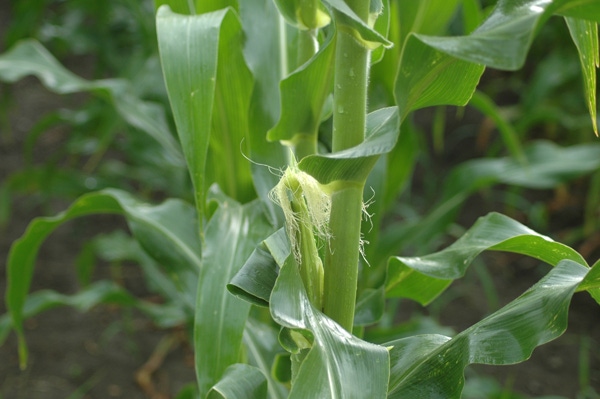August 7, 2013

The University of Illinois has received reports that corn pollination might not have been as successful as expected in parts of Illinois. While the weather was generally favorable during the peak period of pollination, it was warm during the third week of July, and soil water may have been limiting during this period in some fields. Thus we would expect to see this in the areas with low rainfall in July.
This is not the lack of silking that we saw in many areas under the drought of 2012. Silks generally emerged well in most fields this year, but tassel emergence was slowed by dry soil conditions in some cases. The warm third week of July was followed by unusually cool weather, with some lows in the upper 40s and lower 50s the last weekend in July.
It’s possible that these unusual conditions limited pollen production or that silks became non-receptive (unable to accept and germinate pollen) before the end of pollen-shed. Indications are that scattered kernels from poor pollination are being found at the base of the ear more than at the tip, which might point toward lack of early pollen production and possible loss of silk receptivity.
Like what you're reading? Subscribe to CSD Extra and get the latest news right to your inbox!
Regardless of the cause, it’s time to get into fields to see how successful pollination has been. Once silks start to dry, remove husks and shake or pull on silks. Those that detach easily are from fertilized kernels, while those that stay attached are on kernels that have not been fertilized. Silks that emerge more than a week after silks first appeared and seem to be fresh probably emerged after rainfall, and there will typically be little or no pollen available to pollinate these. The target is to have around 500 kernels/ear at populations in the lower to mid-30,000 plant population.
Read more from the University of Illinois about corn pollination this year.
You might also like:
3 Soybean Insects to Scout For
You May Also Like




